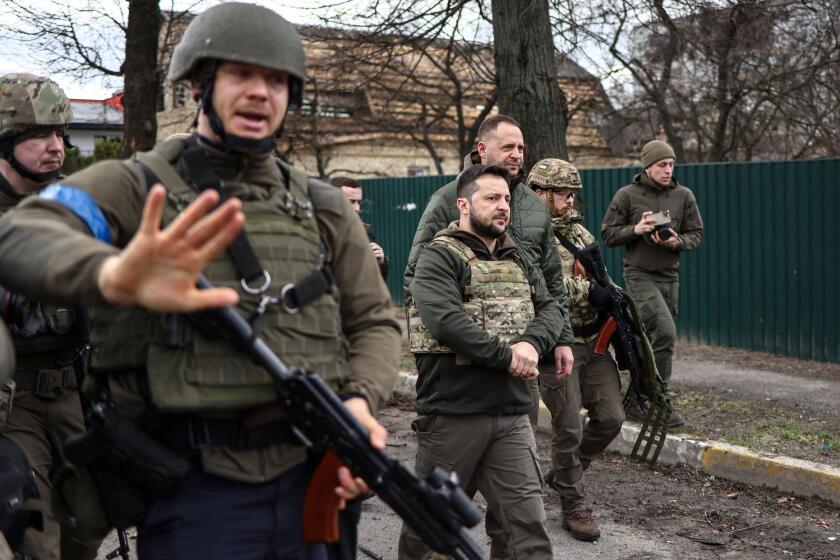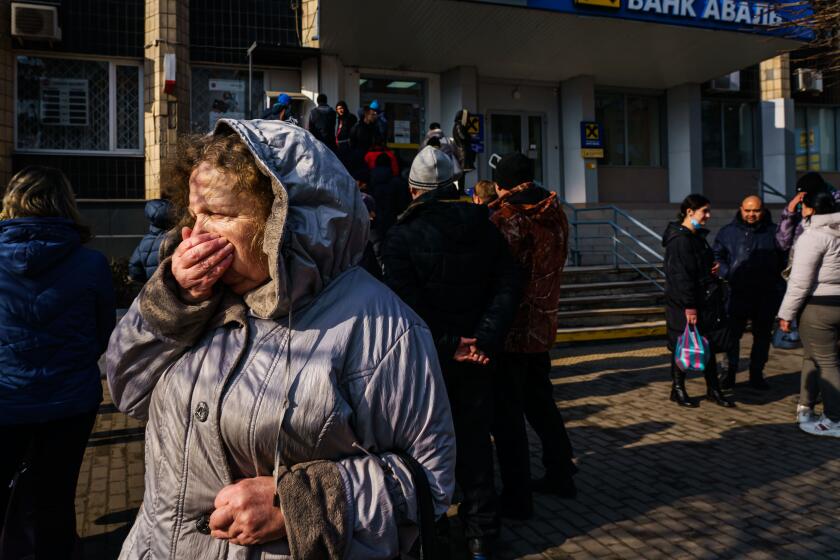Why is Russia’s Vladimir Putin so obsessed with invading Ukraine?

- Share via
WASHINGTON — Why is Russian President Vladimir Putin so obsessed with Ukraine?
That’s the question on many minds as Russia’s invasion of the former Soviet republic continues.
The answer involves a mix of history, geography, and Putin’s desire to return his country to the glory days of Soviet Union superpower.
Putin mourns the Soviet Union
A former KGB operative, Putin has said the collapse of the Soviet Union was one of the greatest disasters of modern history. He says he does not regard the former Soviet republic of Ukraine as a real country, nor Ukrainians as separate people.
In what historians took as an extreme attack on history, Putin said in a rambling speech Monday: “Modern Ukraine was entirely and fully created by Russia.”
The Ukrainian people voted overwhelmingly in 1991, in a democratic referendum, to leave the Soviet Union and become independent.
Much of the West, probably unwittingly, bought into part of the narrative by referring to Ukraine as “the Ukraine,” the way Putin and Russian nationalists do. It’s similar to how Americans refer to “the South” or “the Midwest,” parts of the U.S., not separate countries.
A woman reacts as she stands in front of a house burning after being shelled in the city of Irpin.
No Russian empire without Ukraine
There’s a Russian adage that you can’t have a Russian empire without Ukraine, owing to its long cultural and economic history as the beating heart of the defunct Soviet Union. And Putin is hell-bent on re-creating a new empire to restore his declining country to superpower status.
To understand how Putin views Ukraine, and why it’s so entangled in his national mythology, first look at a map.
Former Soviet republics
Belarus, Ukraine and Georgia — in that order, north to south — are former Soviet Union republics that broke away into ostensibly independent nations after the communist power collapsed in 1991. They sit like a massive land barrier between Russia and Europe to the west.
But Ukraine is by far the largest, a minerals-rich vast land of fertile fields.
Tiny Georgia was invaded by Russia in 2008, and the two fought a brief war. Then, as now, Moscow accused Georgia of attacking pro-Russia breakaway enclaves like South Ossetia. France negotiated a cease-fire that ended most fighting, but Georgia did not regain the disputed territory.
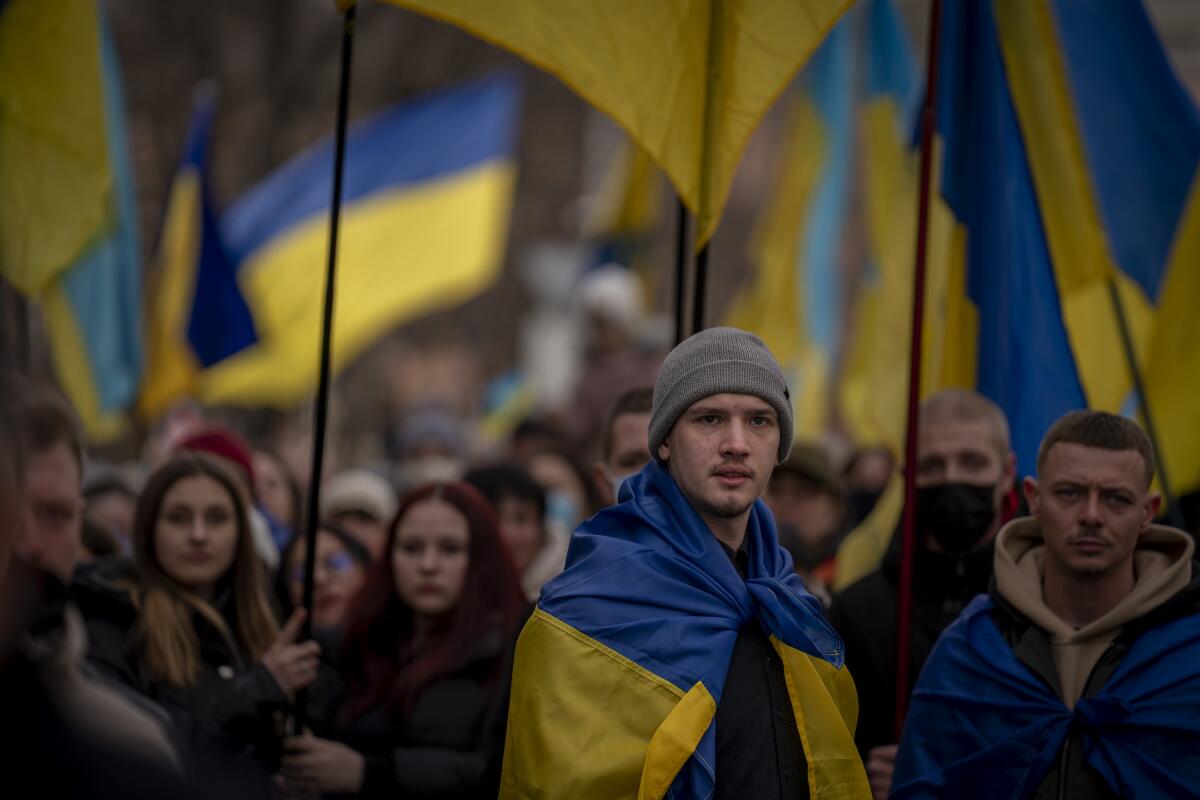
Ukraine’s move toward the West
Belarus, along with several other former Soviet republics, have, or had, Kremlin-friendly leaders. But Ukraine broke from the pattern in a 2014 revolution that seated democratically elected officials and moved the country solidly toward the West. The then-pro-Russia president, Viktor Yanukovych, fled to Moscow in what became known as the Maidan revolution.
But as Ukraine sought to step out of Russia’s sphere of influence, Putin increasingly sought to draw it back. Following the Maidan revolution, he began eating away at eastern Ukraine, declaring swaths like the Donbas to be Russian because many people there speak Russian and have Russian passports.
Russia pressed ahead with its assault on neighboring Ukraine on Thursday, with explosions resounding in cities across the country, airstrikes crippling its defenses and reports of troops crossing the border by land and sea.Map: Tracking the invasion of Ukraine | How to help: California organizations supporting Ukraine | What our foreign correspondents are seeing in Ukraine | Photos: Invasion of Ukraine begins
It’s also about the money
Ukraine had also served as a lucrative source for Putin’s coffers. A Russian gas pipeline crosses Ukraine en route to Europe, ginning big profits for Moscow — money that Putin used to co-opt friendly Ukrainian politicians as well as to buy off his oligarch cronies, according to Russia experts and former diplomats.
A new Russian-backed pipeline, called Nord Stream 2, would circumvent Ukraine and take gas directly to Germany. This is the pipeline, not yet up and running, now targeted by U.S. sanctions.
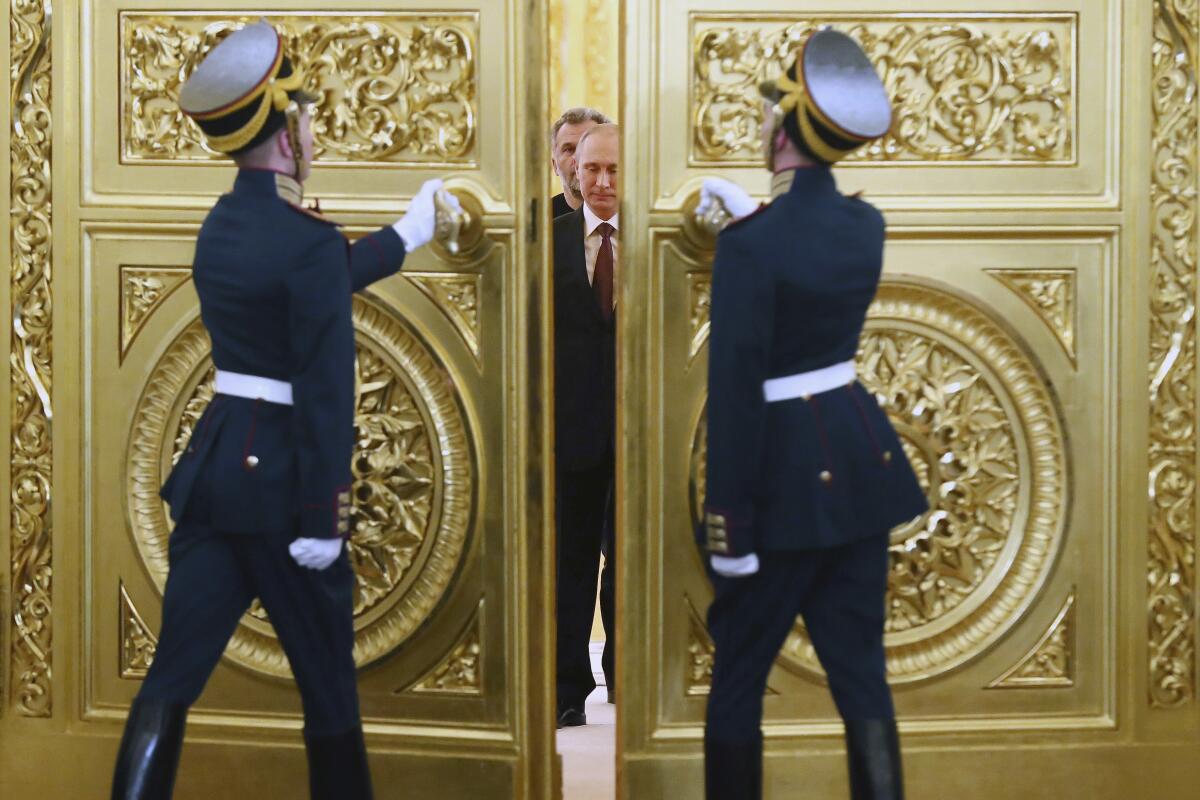
Putin versus ‘rule of law’
Franklin Foer, a writer at the Atlantic magazine who traces family roots to what is today Ukraine, argues that Putin is less concerned about Ukraine joining NATO than he is about Ukraine becoming part of Europe “with its insistence on rule of law.”
Ukraine signed an “association” agreement with the European Union, on March 21, 2014, a month after the Maidan revolution and the same month Putin took control of Crimea.
Rule of law and a campaign against rampant corruption, both of which the U.S. and Europe have been urging on Kyiv with some success, further robs Putin of a tool to control or manipulate the country and its potential quislings, analysts say.
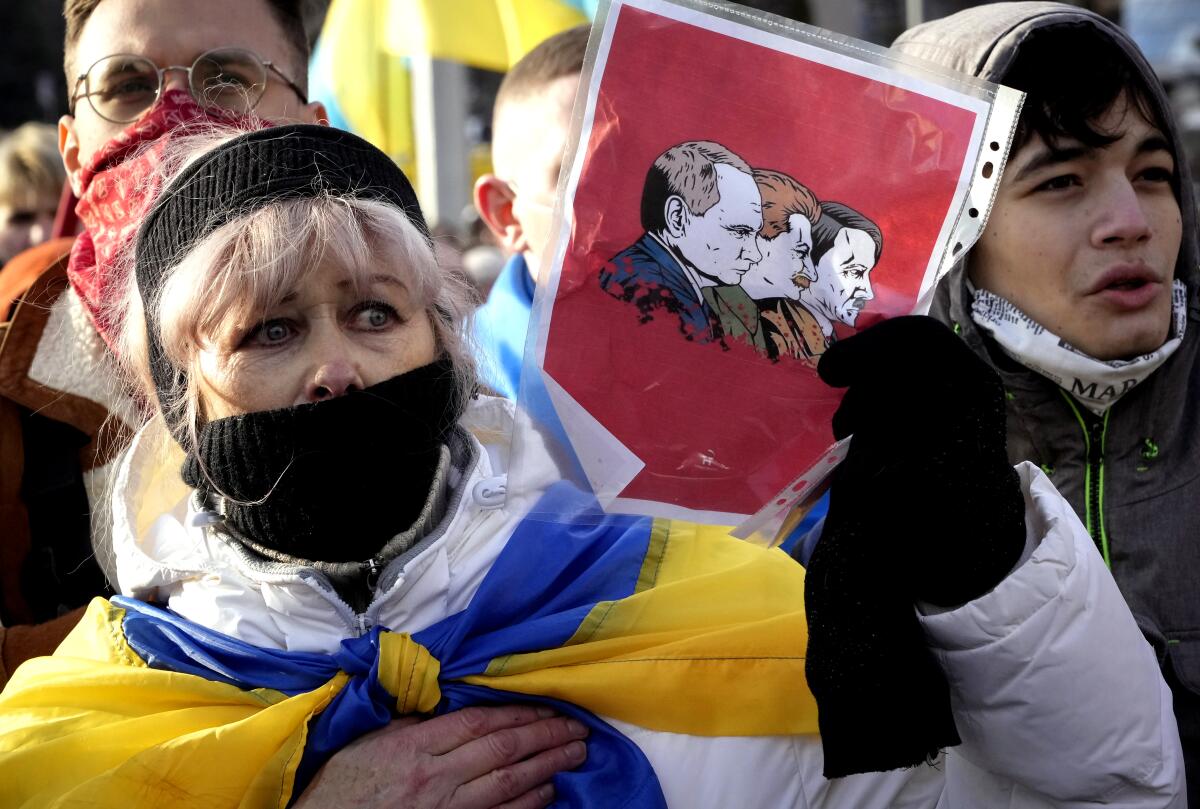
Fears of Ukrainian democracy
“What he feared most was Ukrainian democracy, which would deprive him of influence over the colonial possession that he felt was his birthright,” Foer wrote last week.
U.S diplomats in Europe — including ambassadors to Russia and Ukraine — warned throughout the 2000s that showing any inclination toward incorporating Ukraine into Western organizations like NATO would be “neuralgic” for Putin.
Putin’s goal? A submissive Ukraine
Putin now may not want to take over all of Ukraine, but he certainly wants to swallow up enough of the country to render it a submissive ghost nation, experts and analysts say. One scenario floated by U.S. intelligence is that Putin would make the invasion swift and only long enough to install a new leader.
“The fundamental crisis will not end,” Carl Bildt, former prime minister of Sweden and now a senior envoy in Europe, said on Twitter, “until Putin leaves the Kremlin and [Russia] finally decides whether it will build a modern nation state or whether it still seeks an empire.”
More to Read
Get the L.A. Times Politics newsletter
Deeply reported insights into legislation, politics and policy from Sacramento, Washington and beyond. In your inbox three times per week.
You may occasionally receive promotional content from the Los Angeles Times.
